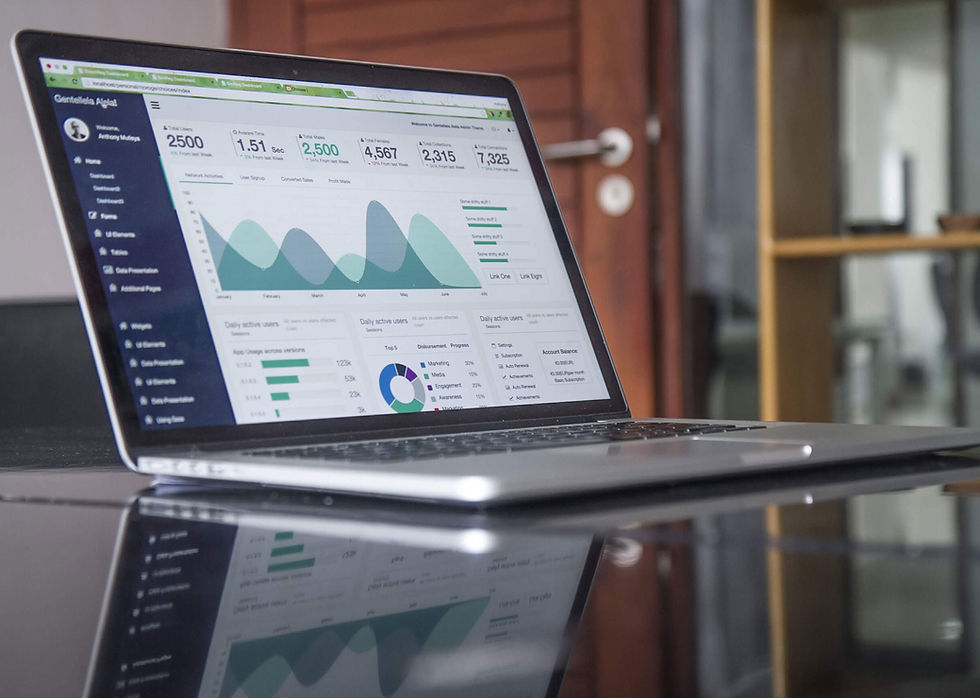The Ultimate Guide to Reliability-Centered Maintenance (RCM) for Businesses
- michealdjones
- Feb 22
- 3 min read
Updated: Feb 22
Equipment failures and unplanned downtime can cripple a business, leading to lost revenue, safety hazards, and costly emergency repairs. Traditional maintenance approaches often fall short, either over-maintaining assets or reacting too late. This is where Reliability-Centered Maintenance (RCM) comes in—a data-driven approach that ensures maintenance efforts are optimized for performance, cost-effectiveness, and reliability.
In this guide, we’ll break down what RCM is, how it benefits businesses, and the steps to implementing it effectively. Whether you run a factory, manage a commercial building, or oversee a fleet of vehicles, adopting RCM can significantly improve operational efficiency.
What is Reliability-Centered Maintenance (RCM)?
RCM is a structured approach to maintenance that focuses on:
✅ Maximizing asset reliability while minimizing maintenance costs.
✅ Identifying failure modes and their impact on operations.
✅ Applying the right maintenance strategy (preventive, predictive, or corrective) based on risk and cost-effectiveness.
Originally developed by the aviation industry, RCM has since been adopted across manufacturing, logistics, healthcare, and infrastructure industries.

Why Businesses Need RCM
1. Reduces Unplanned Downtime
• Instead of reacting to failures, RCM identifies potential issues before they happen using condition monitoring and predictive analytics.
• Example: A manufacturing plant using RCM can detect early signs of motor failure and schedule repairs before production is disrupted.
2. Saves Maintenance Costs
• Businesses waste 30-50% of their maintenance budgets on unnecessary or ineffective servicing. RCM ensures only essential maintenance is performed.
• Example: Instead of servicing HVAC systems every 6 months, RCM schedules maintenance based on actual performance data.
3. Improves Safety & Compliance
• Certain failures can lead to safety risks, regulatory violations, or environmental hazards. RCM prioritizes critical systems to maintain compliance.
• Example: An oil refinery using RCM can prevent hazardous leaks by monitoring pressure levels in pipelines.
4. Extends Asset Life & Performance
• Instead of replacing expensive equipment prematurely, RCM prolongs asset lifespan through smart maintenance strategies.
6 Steps to Implement RCM in Your Business
Step 1: Identify Critical Assets
Not all equipment requires the same level of maintenance. Focus on assets that are:
✔ Essential to business operations.
✔ Costly to repair or replace.
✔ Safety or compliance risks if they fail.
Example: A logistics company prioritizes RCM for delivery trucks, conveyor systems, and warehouse automation but not for office printers.
Step 2: Define Asset Functions & Failure Modes
For each critical asset, ask:
• What is its primary function? (e.g., A conveyor belt moves packages.)
• What are its failure modes? (e.g., Motor burnout, belt misalignment, electrical failure.)
• What are the consequences of failure? (e.g., Production delays, lost revenue.)
Step 3: Perform Failure Mode and Effects Analysis (FMEA)
• FMEA helps businesses rank failures by severity, frequency, and detectability.
• This helps determine which failures require immediate action and which can be monitored over time.
Step 4: Choose the Right Maintenance Strategy
RCM identifies the best maintenance approach for each failure mode:
• Predictive Maintenance – Uses sensors, AI, and real-time monitoring to detect early warning signs.
• Preventive Maintenance – Scheduled servicing based on asset usage or time intervals.
• Corrective Maintenance – Fixing failures after they occur (used for low-impact systems).
Example: A factory may use predictive maintenance for high-cost machinery, preventive maintenance for HVAC systems, and corrective maintenance for non-critical lighting fixtures.
Step 5: Implement & Monitor
• Use CMMS (Computerized Maintenance Management Software) to track and schedule maintenance tasks.
• Train staff on RCM processes and condition monitoring tools.
• Gather performance data to fine-tune strategies over time.
Step 6: Continuously Improve
RCM is an ongoing process. Regularly review:
✔ Equipment performance trends.
✔ Maintenance costs vs. savings.
✔ Feedback from technicians and operators.
Over time, businesses can refine their maintenance strategies to maximize efficiency and ROI.
How MARS Can Help with RCM Implementation
At MARS, we specialize in Reliability-Centered Maintenance solutions for industrial, commercial, and residential clients. Our approach includes:
✅ Data-driven maintenance planning to reduce downtime.
✅ AI-powered predictive maintenance tools for early failure detection.
✅ On-demand skilled technicians for critical repairs and servicing.
✅ Custom RCM strategies tailored to your business needs.
Final Thoughts: Is RCM Right for Your Business?
If you’re struggling with unexpected equipment failures, rising maintenance costs, or inefficiencies in your maintenance strategy, RCM is the solution. By shifting from a reactive to a proactive, reliability-focused approach, businesses can save money, boost productivity, and improve safety.



Comentarios